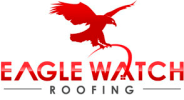Roof Insurance Claims: When to Repair vs. When to Replace
Roof damage is a significant concern for homeowners, especially those living in areas prone to extreme weather conditions such as storms, hail, and high winds.
When damage occurs, deciding whether to repair or replace the roof can be challenging.
Many homeowners rely on their insurance policies to cover the necessary work, but navigating the claims process can be complex.
Understanding the key factors that insurance companies consider when assessing claims can help you make informed decisions.
Homeowners should know when a repair is sufficient and when a full replacement is necessary to prevent long-term structural issues.
Working with a reputable roofing contractor can also help maximize the chances of receiving fair compensation from your insurance provider.
At Eagle Watch Roofing, we specialize in helping homeowners navigate roof insurance claims, ensuring they receive the best possible solution for their homes.
Whether your roof requires minor repairs or a full replacement, our team of experienced professionals is here to guide you through the process and provide expert service.
Understanding Roof Insurance Coverage

Before filing a roof insurance claim, it’s crucial to understand the coverage outlined in your homeowner’s insurance policy.
Not all policies cover the same types of roof damage, and exclusions or limitations can significantly impact the outcome of your claim.
What Does Homeowners Insurance Cover?
Most standard homeowners’ insurance policies cover roof damage caused by sudden and accidental events, such as:
- Wind and Storm Damage – High winds can lift, tear, or remove shingles, causing leaks and exposing the roof structure to further damage.
- Hail Damage – Hail can cause dents, cracks, or punctures in roofing materials, leading to deterioration over time.
- Falling Debris – Trees or other objects falling on the roof during storms can create extensive damage.
- Fire Damage – Whether from lightning strikes or accidental fires, roof damage caused by fire is generally covered.
What Is Typically Not Covered?
While many forms of damage are covered, certain conditions may limit your insurance claim:
- Normal Wear and Tear – If your roof has reached the end of its lifespan, insurers may deny coverage, citing natural deterioration.
- Poor Maintenance – If the damage results from a lack of maintenance, such as failing to address small leaks before they escalate, the claim may be denied.
- Pre-Existing Damage – Damage that existed before the policy began or was previously unreported is unlikely to be covered.
Understanding these factors can help homeowners prepare for the claims process and avoid unexpected denials.
Key Factors That Determine Roof Repair vs. Replacement
When filing an insurance claim, the insurance adjuster and your roofing contractor will assess the extent of the damage to determine whether a repair or a full replacement is necessary.
Several critical factors influence this decision.
Extent of the Damage
The most important factor is the severity and scope of the damage:
- Minor, localized damage – If the damage is limited to a small area, such as a few missing shingles or minor leaks, a repair is usually the best option.
- Significant damage affecting structural integrity – If the roof has multiple leaks, missing shingles across large areas, or compromised decking and underlayment, a full replacement may be required.
Age of the Roof
The age of your roof plays a crucial role in determining whether it can be repaired or needs replacement:
- Newer roofs (less than 10 years old) – If the roof is relatively new and has only minor damage, insurance companies often recommend repairs.
- Older roofs (15+ years old) – If the roof is nearing the end of its lifespan, the insurance company may approve a full replacement, especially if repairs would not be cost-effective.
Material Matching Issues
If the original roofing material is no longer available or has been discontinued, repairs may not be a viable option.
Many insurance policies include a “matching clause”, meaning the new repair must seamlessly blend with the existing roof. If an exact match cannot be found, the insurer may approve a full replacement instead.
Underlying Structural Damage
A roof may appear to have only surface-level damage, but hidden issues beneath the shingles can require a full replacement.
If water has penetrated the underlayment and decking, causing wood rot or structural weakness, a repair alone may not be sufficient.
Insurance adjusters and contractors will look for signs of moisture damage to determine if a replacement is necessary.
Insurance Adjuster’s Recommendation vs. Roofing Contractor’s Opinion
Insurance adjusters work on behalf of the insurance company and often look for the most cost-effective solution.
A professional roofing contractor, like Eagle Watch Roofing, can conduct an independent inspection and advocate on your behalf if a full replacement is justified.
Homeowners should seek a second opinion if they feel the insurance adjuster is undervaluing their claim.
When Insurance Covers Repairs Only
In cases where the damage is minor and does not pose an immediate risk to the home, insurance companies typically approve repairs rather than full replacements.
Situations Where Repairs Are Preferred
- A few missing or damaged shingles after a windstorm
- Small hail impacts that do not compromise the structural integrity
- Localized flashing damage leading to minor leaks
- Limited tree debris impact affecting only one section of the roof
In these cases, a professional roofing company can complete the necessary repairs quickly and efficiently, restoring the roof to its proper condition.
When Insurance Approves a Full Roof Replacement
A full roof replacement is typically necessary when the damage is severe, widespread, or cannot be repaired cost-effectively.
Situations Where Full Replacement Is Necessary
- Significant storm damage across the entire roof
- Hail damage causing cracks or punctures throughout the shingles
- Multiple leaks indicating deep water penetration and structural damage
- Roof nearing the end of its lifespan with significant wear and tear
In these scenarios, insurance companies are more likely to approve a full replacement to ensure the roof can continue protecting the home effectively.
How to Maximize Your Roof Insurance Claim
Filing a successful insurance claim requires careful documentation and a thorough understanding of your policy. Follow these steps to ensure you receive the coverage you deserve.
1. Document the Damage Immediately
- Take clear, high-quality photos and videos of the damage from multiple angles.
- Record the date and cause of the damage to support your claim.
2. Get a Professional Roof Inspection
- Contact Eagle Watch Roofing for a comprehensive roof inspection.
- Our experts can provide detailed reports to support your claim.
3. Review Your Insurance Policy
- Understand your coverage limits, deductibles, and exclusions.
- Check if your policy includes a matching clause for materials.
4. Work with a Roofing Contractor During the Insurance Inspection
- Have a roofing contractor present when the insurance adjuster inspects your roof.
- If necessary, request a second opinion or reinspection.
5. Appeal if Your Claim Is Denied
- If your claim is denied unfairly, gather additional evidence and request a reassessment.
- Provide supporting documentation from an independent roofing expert.
Why Choose Eagle Watch Roofing?
Eagle Watch Roofing is a trusted roofing contractor specializing in storm damage repair, roof insurance claims, and high-quality roof replacements. Homeowners choose us because we provide:
- Comprehensive roof inspections with detailed documentation
- Expert negotiation with insurance companies to maximize claims
- High-quality materials and skilled workmanship
- Fast and reliable service to protect your home
If you suspect roof damage, don’t wait until it worsens. Contact Eagle Watch Roofing today at https://eaglewatchroofing.com for a free inspection and consultation on your roof insurance claim.
Conclusion
Deciding between roof repairs and a full replacement depends on damage severity, insurance policy coverage, and long-term cost-effectiveness.
While insurers prefer minimal repairs, working with a trusted roofing contractor like Eagle Watch Roofing ensures you receive the best possible outcome for your roof insurance claim.
If your roof has suffered damage, take action today to protect your home.
Schedule a free inspection with Eagle Watch Roofing to ensure you get the coverage and service you deserve. Visit https://eaglewatchroofing.com to get started on your roof insurance claim today.
Frequently Asked Questions (FAQs)
What type of roof damage is covered by insurance?
Most homeowners’ insurance policies cover sudden and accidental damage caused by storms, hail, high winds, falling debris, and fire. However, normal wear and tear, poor maintenance, and pre-existing damage are generally not covered.
How do I know if my roof needs a repair or a full replacement?
A roof repair is usually sufficient for minor, localized damage, such as a few missing shingles or small leaks. A full replacement may be necessary if there is widespread damage, structural issues, or if the roof is nearing the end of its lifespan.
Will my insurance cover the full cost of a roof replacement?
Insurance coverage depends on your policy terms, deductible, and the extent of the damage. If a roof is severely damaged and beyond repair, the insurance company may approve a full replacement. However, they may only cover repairs if the damage is minimal.
What should I do if my insurance claim is denied?
If your roof insurance claim is denied, you can request a reinspection, provide additional documentation from a licensed roofing contractor, or appeal the decision. Working with a professional like Eagle Watch Roofing can strengthen your claim.
How can Eagle Watch Roofing help with my roof insurance claim?
Eagle Watch Roofing provides comprehensive roof inspections, detailed documentation, and expert negotiation with insurance companies to maximize your claim. We ensure that homeowners receive the necessary repairs or full replacement covered under their policy.

